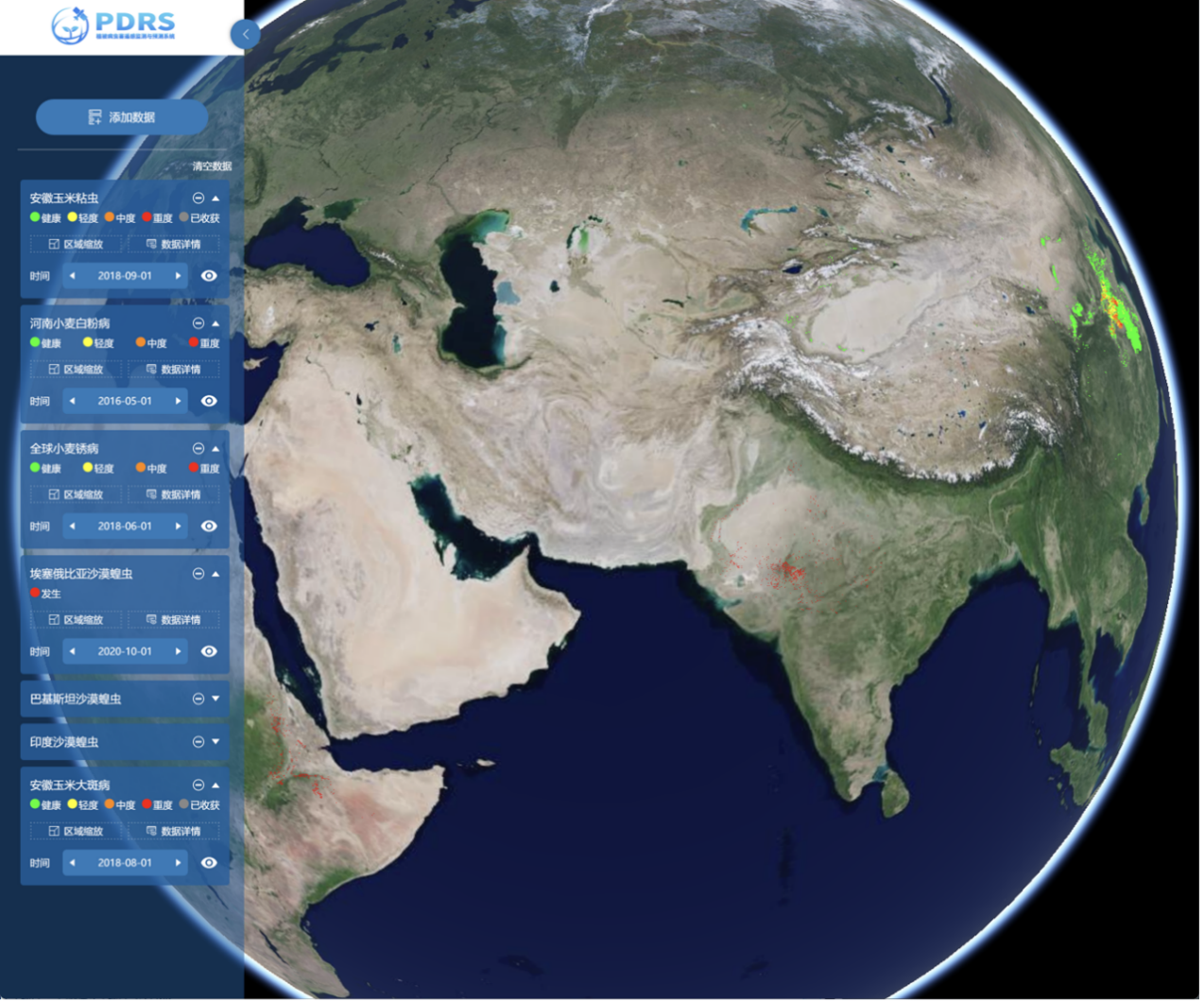AIR Releases Upgraded Remote Sensing Monitoring and Forecasting System of Vegetation Pests and Diseases
Pests and diseases are major threats to food security in the world, especially for wheat, rice, and maize, the world's dominant food crops. More than 40 percent yield loss is caused by pests and diseases every year, while in some regions the loss may be higher.
During the Third Conference on Remote Sensing of Vegetation Pests and Diseases held online on August 27, the Aerospace Information Research Institute (AIR) under the Chinese Academy of Sciences (CAS) released an upgraded remote sensing monitoring and risk forecasting system of vegetation pests and diseases, which can provide relevant products and reports at global, continental, and local scales.
The updated system integrates satellite images, GIS, metrological data and plant protection datasets with self-developed methods and algorithms, to conduct time-series monitoring on crop, forestry, and grassland impacted by major pests and diseases.
The research focuses include mapping the habitats, predicting the migration and spreading paths of main pests and diseases, and then releasing products and reports describing pest and disease spatial distribution and damage levels.
According to Prof. HUANG Wenjiang, head of the research group, more than 120 issues of the bilingual reports on "Remote Sensing Monitoring and Forecasting Report on Vegetation Pests and Diseases" and 35 issues on "Monitoring and Assessment Report on Desert Locust in Asia and Africa" have been produced and released based on the system.
The reports have been sent to government departments, institutions, business companies and landlords to support field management and agricultural policy making.
Since 2020, the research team has started collaboration with the Food and Agriculture Organization of the United Nations (FAO), the Global Biodiversity Information Facility (GBIF), the Group on Earth Observations (GEO) and the Centre for Agriculture and Bioscience International (CABI) to apply the products in eight countries including Pakistan, Yemen, Somalia, Eritrea, Ethiopia, Kenya, Nepal, and India, contributing to the food security of these countries.
The ongoing research has been playing an active role among the efforts to ensure global food security, promote farmers' income, reduce environmental pollution, protect biodiversity and achieve sustainable development of ecosystems.

Interface of the remote sensing monitoring and forecasting system of vegetation pests and diseases.



News & Events